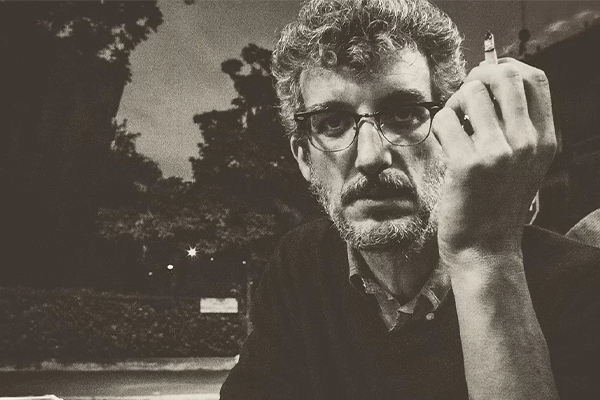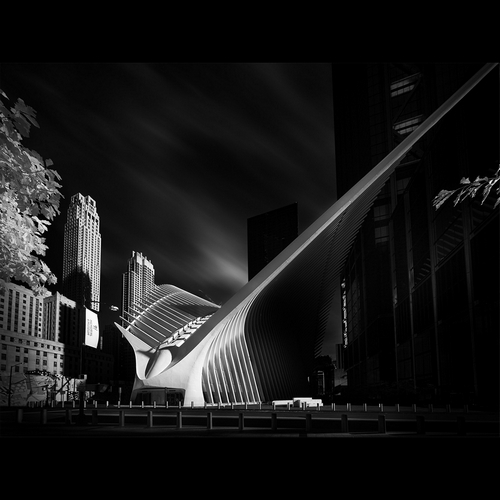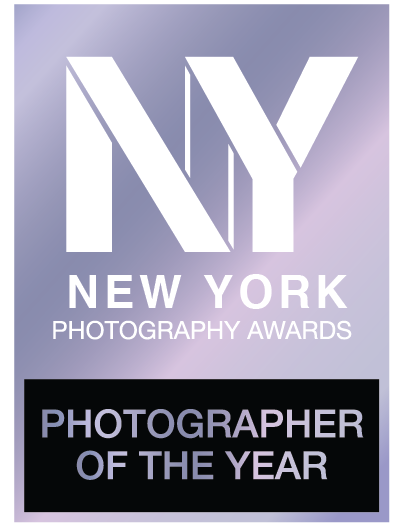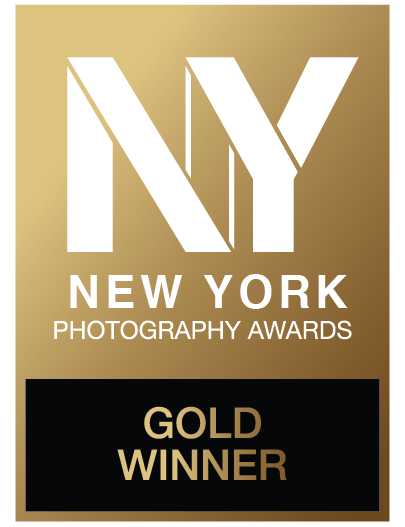
Raffaele Canepa
1. Can you introduce yourself and talk about how you got into photography?
I was introduced to analogue photography as a kid by my father and with ups and downs, I've fiddled with cameras since the young age.
In 1993 I moved from Genova - where I was born in 1974 - to Milano to attend university; soon after my arrival in town I was involved in my first film production job, and at the end of my second year I quit economics to pursue a career in the film production industry.
For almost 20 years I have worked as a producer for TV shows and ADV and a director for broadcast and web documentaries and series; throughout this whole time, I regarded photography as a sort of visual sketchbook.
It was around 10 years ago that I stepped into professional photography as a sport and landscape photographer on golf courses, and on those very locations I started exploring the reign of invisible light and Infrared Photography, which is now at the heart of my work.
After a few years of experimenting on infrared landscapes, I've switched my focus to architectural photography and how IR light responds to different materials and light conditions.
From 2017 I have produced a consistent body of work mainly focused on Architecture and Minimal Landscape.
2. Where did you study photography?
I didn't attend any photography school: my knowledge comes from my field experience as a film producer and director. Fun fact: during my first years as a photographer I really struggled with portrait mode, as I was used to seeing the world through the cinematic frame, in landscape mode.
My experience with Infrared Photography comes from years of personal research and field experimentation, supported by a basic knowledge in physics and maths: in fact, you can't totally rely on what your eyes see when you deal with infrared light. It is a trial and error process that is still ongoing.
3. Do you remember your first shot? What was it?
It's a memory related to primary school, for some homework on trains. My father entrusted his Nikkormat to me to go and photograph the trains at the station with a few simple recommendations: keep the 50mm lens always set to f8, check the lightmeter hand to be in the center and that the focus indicator to be aligned. Just a little more than a modern point-and-shoot system, but I already felt as a Pulitzer Prize. Even if at the time I had no idea what that was.
4. What equipment do you use?
I work with DIY modified cameras; I disassemble the camera down to the sensor, remove the filter that blocks infrared light, and put everything back together. I then use a range of different filters that cut off the visible light at different points of the spectrum, depending on the light condition I'm working with and the final effect that I want to achieve.
I've always been a Nikon guy, but recently I switched to Fuji XT mirrorless system, which is very helpful when working with IR, as you're not able to see through the viewfinder of a traditional DSLR with an infrared filter mounted on the lens.
5. What do you hope to achieve?
Fame and wealth, of course.
Just kidding. I can't really think of a long-term goal: what really drives me is the continuous research and experimentation that is at the heart of Infrared Photography. Naturally, I'm always happy when I take part in an exhibition or when I'm awarded a prize. I hope I can inspire some other people and show them some aspect of the world under a never seen light...
6. What compliment inspired/touched you the most?
It's an episode that happened recently, during a shoot on the golf course for some sporting event (every now and then I go back to my origins).
A guy came up to me and told me that he was sure that he had seen me before: I thought that we had met at some golfing event in the past and that I portrayed him on the course, but in fact, he recognized me for a video on youtube where I give a talk on infrared photography. I begged him to ask me for an autograph, but even if he didn't I was touched by the fact that my talk inspired his interest for IR.
7. What inspires your unique storytelling?
I like the idea of taking a picture of something that is not exactly what I see with my eyes; I like the fact that once you've taken the shot you only are at the beginning of a process and that each time it will be slightly different; I enjoy the experimental part of the work involved in each and every step of the workflow.
I am fascinated by the idea that what I show in my pictures is technically invisible to the naked eye.
8. What THREE (3) words describe your photography style?
Surreal, Metaphysical, Silent.
9. Congratulations! As the winner of the New York Photography Awards, what does it mean for you and your team to receive this distinction?
It's a great honor. New York is a major hub for photography and arts in general, and this recognition gives credit to my work and will certainly be a booster for my next future activities.
10. Can you explain a bit about the winning work you entered into the 2021 New York Photography Awards, and why you chose to enter this project?
Invisible light of NYC is part of a long-term project on the world's most iconic buildings and landmarks. I've shot this series in October 2019 during a trip to New York City; at that time I was experimenting with a filter that was quite new to my work, and during the shoot I wasn't totally sure of the final results. Back home in Italy, I started post-producing the shots and I realized that the results were pretty interesting and prone to a sort of minimalist look that has often been a focal point in my research.
I knew that my pictures could be appreciated as a series on NYC architecture but honestly, I didn't expect to receive such a response and to be awarded as the Photographer of the Year.
I am really happy that all this happened, and it's a true confidence booster.
11. How has winning an award developed your career?
I have won a few awards in the past years, that have helped to build my career and reputation just like bricks on over the other, but NYPA is a true milestone. I'm expecting big things to happen in 2022.
12. Name 1-3 photographers who have inspired you.
Michale Kenna, for his minimalist style. I love his work and try to adapt his guidelines into my own work.
Lee Jeffries; though I'm not a portrait photographer, his BnW style is amazing and his portraits are so intense.
Unmesh Dinda; he's a postproduction expert rather than a photographer. Postproduction plays a fundamental role in my workflow and even though Unmesh has never done anything specific on IR, under his guide I was able to take it to another level.
13. What was the best piece of advice you were given starting out, by a mentor or your role model?
I'm not sure I can pick one single piece of advice, I'm not even sure I can remember one in particular. Ralph Waldo Emerson once wrote: "I cannot remember the books I've read any more than the meals I have eaten; even so, they have made me". I think that with advice is the same thing.
14. What advice would you give someone who would like to become a photographer today?
Don't be afraid to imitate the work of others. Imitation and repetition is the best way for learning: just like when you're learning to play an instrument, you don't start with playing your own music. At some point, you will find that you're ready to walk your own path and you will do that with a solid background.
15. What is your key to success? Any parting words of wisdom?
Though it may sound in contrast with what I've just said, I've followed - and I'm still following - my own passion and interest. Infrared Photography is a very small niche, but I've left everything else behind (I'm talking about event and sports photography) in order to dive deep into what really gives me the thrill of being a photographer.
Do what you like, not what other people like.
16. How do you stay in that space of being receptive to new information and knowledge?
Even though I'm not really a social media guy, I think that social media plays a fundamental role in keeping up-to-date. Still, this is just the starting point and not the end of the story, it's what should light the sparkle and stimulate to dig deeper into a topic.
It's not easy to navigate through such a huge amount of information, and it's hard work of researching and cutting off dead branches.
17. Anything else you would like to add to the interview?
Marjorie Gurd; she's a Newyorker and an award-winning street photographer (majeda_7@hotmail.com)
Roberta Cima; art gallery owner based in Rome with a strong attitude for photography (info@spaziocima.it)
Raffaele Canepa, myself. I'd love to be part of such an experience (raffaelecanepa@gmail.com)


